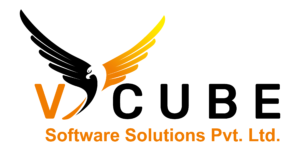MEAN STACK
MEAN STACK TRAINING
MEAN STACK: Create scalable applications that are optimized for cloud deployment. Streamline development by using a single language across the entire application Simplify deployment with a built-in web server Manage large amounts of data with the flexibility of MongoDB When building an application from scratch, employing a consistent, standardized software stack is vital.
Duration:60 days

Course's Key Highlights
![]() 100+ hours of learning
100+ hours of learning![]() Real-time industry professionals curate the course.
Real-time industry professionals curate the course.
![]() Internships and live projects
Internships and live projects
![]() A cutting-edge training facility
A cutting-edge training facility
![]() Dedicated staff of placement experts
Dedicated staff of placement experts
![]() Placement is guaranteed 100 percent Assistance
Placement is guaranteed 100 percent Assistance
![]() 28+ Skills That Are Useful in the Workplace
28+ Skills That Are Useful in the Workplace
![]() Trainers with a minimum of 12 years of experience
Trainers with a minimum of 12 years of experience
![]() Videos and back-up classes
Videos and back-up classes
![]() Subject Matter Experts Deliver Guest Lectures
Subject Matter Experts Deliver Guest Lectures
Description for the Mean Stack
Why Mean Stack is so popular?
A relatively new stack, MEAN stands for MongoDB, Express.js, AngularJS, and Node.js. MEAN is an end-to-end JavaScript stack largely used for cloud-ready applications. Understanding why you might use it, identifying examples of when to employ it, and diving deeper into the individual components can help you maximize the value of MEAN for software development.
If you want to see how easy it is to develop and deploy an application to the cloud using a MEAN stack, IBM offers a simple tutorial for creating a modern application in a MEAN stack.
MEAN is an open source web stack that is mainly used to create cloud-hosted applications. MEAN stack applications are flexible, scalable, and extensible, making them the perfect candidate for cloud hosting. The stack includes its own web server so it can be deployed easily, and the database can be scaled on demand to accommodate temporary usage spikes. A MEAN application enters the world optimized to take advantage of all the cost savings and performance improvements of the cloud.
Curriculum for the Mean Stack
WEB TECHNOLOGIES
- Introduction to web technologies
- Introduction to web applications
- What is FULL, MEAN, MERN Stack
- Editors
HTML
- Introduction
- Layers in web application
- Tags, attributes
- Programming
- Audio, Video, Graphics
CSS
- Introduction
- Selectors and types of selectors
- Font, text, border, images
- Properties
- Class rules
- Layouts with CSS
- Absolute, relative, fixed Positioning
- Float, clear
JAVASCRIPT
- Introduction
- Programming languages
- Uses of JavaScript
- Keywords, operators
- Browser objects, JavaScript objects
- Dialogs
- Events
- Basic programming
- Functions
- Let, const keywords
- Nested functions, Closures
- Anonymous functions
- Function expressions
- Hoisting in JavaScript
- animations
- Validations
- AJAX
DOM (document object model)
- Introduction
- Types of DOM
- Uses
- Properties and methods
- programming
BOOTSTRAP
- Introduction
- Responsive design
- Classes
- Containers
- Colors, jumbotran, navbar
- Forms, buttons, cards, modals
- Carousel, images
DATA FORMATS
- XML
- JSON
- JSON Data structures
- Difference between XML and JSON
TYPESCRIPT
- Introduction
- Installing Typescript
- Keywords, types, operators
- Programming
- Functions and types
- Interfaces
- classes
ANGUALAR
- Introduction
- Single page applications
- Typescript
- Installation and angular CLI
- Components
- Directives
- Angular Forms
- Form validations
- Data binding
- Routing and navigation
- Using jQuery and bootstrap
- Dependency Injection
- Security
- Services
- AJAX
EXPRESS
- Introduction
- MVC pattern
- Implementing cookies and session
- Creating actions
- Defining routes
- http authentication
- using RESTful services
NODEJS
- Introduction
- Installation
- NPM
- CLI and REPL
- Modules
- Asynchronous programming and callbacks
- Streams and Buffers
- Web server and creating web server
- Networking
- Sending Email
- Database connectivity
- Using Mongo, MySQL
- Debugging NodeJS applications
MONGODB
- Introduction to databases
- No SQL databases
- Installation of MongoDB
- Working with MongoDB
- MongoDB document
- Data modelling
- MongoDB with JavaScript
- Indexes
- Administering databases
Upskill & Reskill For Your Future With Our Software Courses
Best Mean Stack Coaching Center In Hyderabad

Quick Links
- Home
- About Us
- Courses
- Contact Us
Other Pages
Contact Info
- 2nd Floor Above Raymond’s Clothing Store KPHB, Phase-1, Kukatpally, Hyderabad
- +91 7675070124, +91 9059456742
- contact@vcubegroup.com
